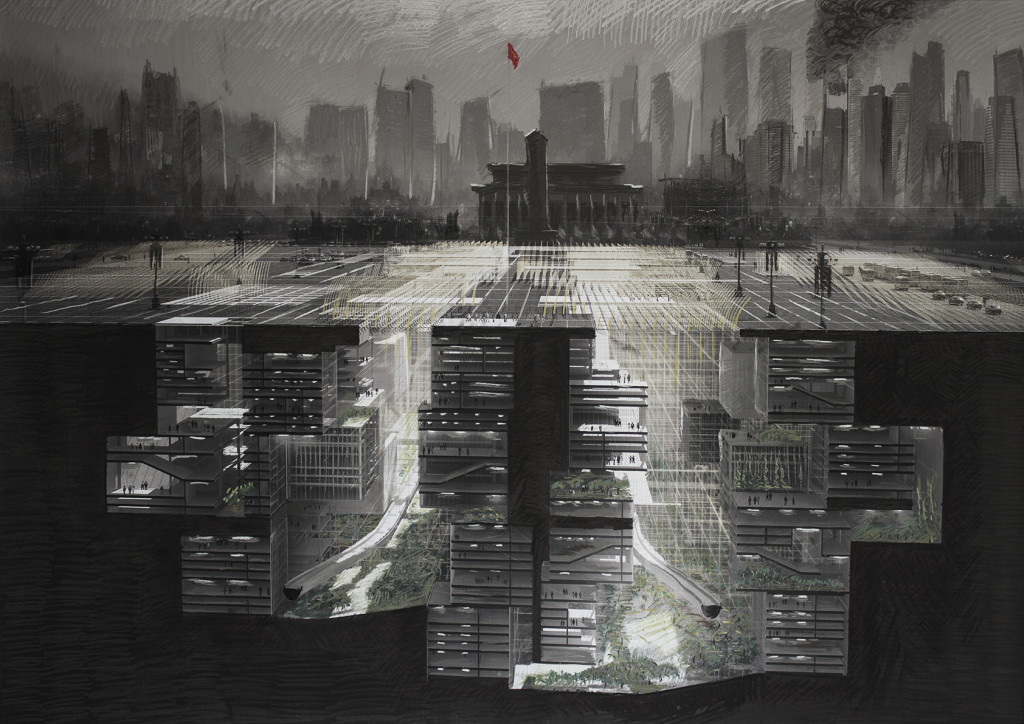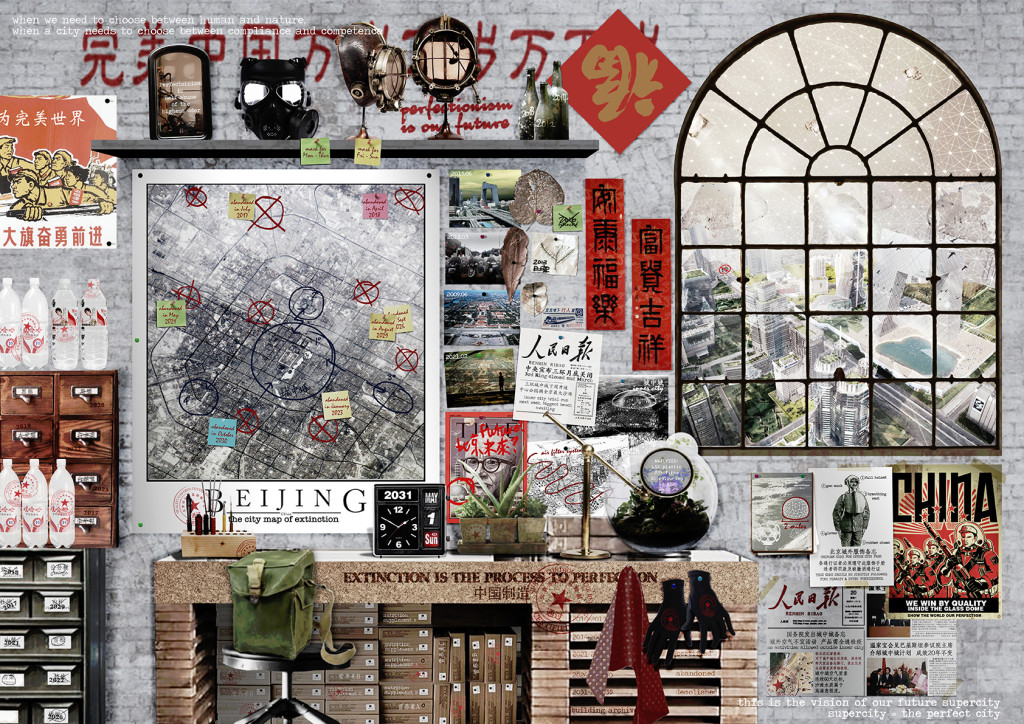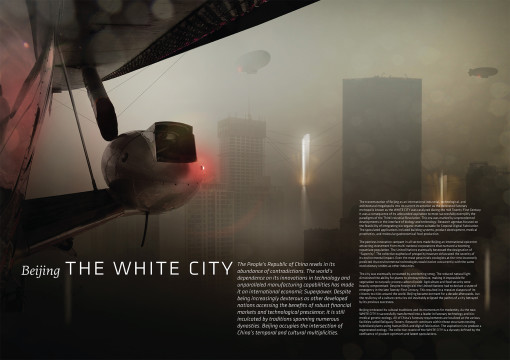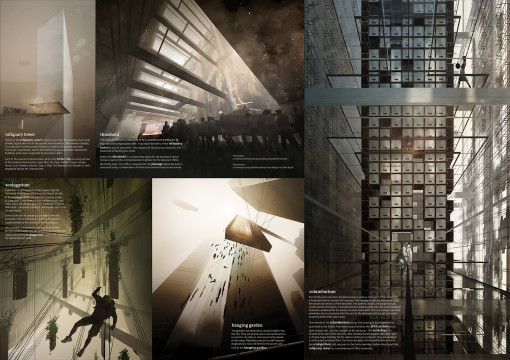Info:
Title: The White City - Code: ac312Contest: Beijing / 2014
By: Brandon Bergem - Thom Jeffrey Garcia - Nicole Hunt
Views: 2767 Likes: 1
Votes:
Greg Lynn 5 Ai Weiwei 7 Sou Fujimoto 3 Eric de Broches des Combes 85.8
The White City
The People’s Republic of China revels in its abundance of contradictions. The world’s dependence on its innovations in technology and unparalleled manufacturing capabilities has made it an international economic Superpower. Despite being increasingly dexterous as other developed nations accessing the benefits of robust financial markets and technological prescience; it is still inculcated by traditions spanning numerous dynasties. Beijing occupies the intersection of China’s temporal and cultural multiplicities. The transmutation of Beijing as an international industrial, technological, and architectural megalopolis into its current incarnation as the venerated funerary metropolis known as the WHITE CITY was catalyzed during the mid Twenty-First Century. It was a consequence of its unbounded aspiration to most successfully exemplify the paradigms of the Third Industrial Revolution. This era was marked by unprecedented developments in the interface of biology and technology. Research agendas focused on the feasibility of integrating bio-organic matter suitable for Corporal Digital Fabrication. The speculated applications included building systems, product development, medical prosthetics, and molecular gastronomical food production. The peerless innovation rampant in all sectors made Beijing an international epicentre attracting investment from multi-national corporations that nurtured a booming expatriate population. The United Nations eventually bestowed the designation of “Supercity”. The collective euphoria of prosperity however obfuscated the severity of its environmental impact. Even the most pessimistic ecologists at the time incorrectly predicted that environmental technologies would evolve concurrently with the same revolutionary strides as other industries. The city was eventually consumed by its smog. The reduced natural light diminished the ability for plants to photosynthesize, making it impossible for vegetation to naturally process carbon dioxide. Agriculture and food security were heavily compromised. Despite foreign aid, the United Nations had to declare a state of emergency in the late Twenty-First Century. This resulted in a massive diaspora of its citizens to cities around the world. Beijing became dormant for a decade afterwards, but the resiliency of a culture centuries old inevitably eclipsed the pathos of a city betrayed by its previous successes. Beijing embraced its cultural traditions and its momentum for modernity. As the new WHITE CITY it successfully transformed into a leader in funerary technology and bio-medical genetic ecology. All of China’s funerary requirements are localized at the various facilities called Reliquary Towers. Research continues within these structures testing hybridized plants using human DNA and digital fabrication. The aspiration is to produce a regenerated ecology. The collective reverie of the WHITE CITY is a dynasty defined by the confluence of prudent optimism and latent speculations.








